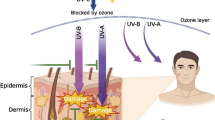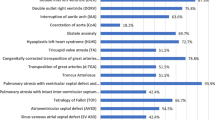Abstract
Engaging students and the public in understanding UV radiation and its effects is achievable using the real time experiment that incorporates blueprint paper, an “educational toy” that is a safe and easy demonstration of the cyanotype chemical process. The cyanotype process works through the presence of UV radiation. The blueprint paper was investigated to be used as not only engagement in discussion for public outreach about UV radiation, but also as a practical way to introduce the exploration of measurement of UV radiation exposure and as a consequence, digital image analysis. Tests of print methods and experiments, dose response, spectral response and dark response were investigated. Two methods of image analysis for dose response calculation are provided using easy to access software and two methods of pixel count analysis were used to determine spectral response characteristics. Variation in manufacture of the blueprint paper product indicates some variance between measurements. Most importantly, as a result of this investigation, a preliminary spectral response range for the radiation required to produce the cyanotype reaction is presented here, which has until now been unknown.
Similar content being viewed by others
References
B. J. Smith, C. Ferguson, J. McKenzie, A. Bauman and P. Vita, Impacts from repeated mass media campaigns to promote sun protection in Australia, Health Promot. Int., 2002, 17 1, 51–60.
W. McCarthy, The Australian Experience in Sun Protection and Screening for Melanoma, J. Surg. Oncol., 2004, 86, 236–245.
B. K. Armstrong and A. Kricker, The epidemiology of UV induced skin cancer, J. Photochem. Photobiol., B, 2001, 63, 8–18.
D. E. Godar, UV Doses Worldwide, Photochem. Photobiol., 2005, 81, 736–749.
F. de Gruijl, Skin cancer and solar UV radiation, Eur. J. Cancer, 1999, 35 14, 2003–2009.
L. Lemus-Deschamps and J. K. Makin, Fifty years of changes in UV Index and implications for skin cancer in Australia, Int. J. Biometeorol., 2012, 56, 727–735.
R. Mckenzie, P. Aucamp, A. Bais, L. Bjorn, M. Ilyas and S. Madronich, Ozone depletion and climate change: impacts on UV radiation, Photochem. Photobiol. Sci., 2011, 10, 182–198.
R. M. Lucas, A. J. McMichael, B. K. Armstrong and W. T. Smith, Estimating the global disease burden due to ultraviolet radiation exposure, Int. J. Epidemiol., 2008, 37, 654–667.
D. English, B. K. Armstrong, A. Kricker and C. Fleming, Sunlight and Cancer, Cancer Causes Control, 1997, 8, 271–283.
O. B. Carter and R. J. Donovan, Public (Mis)understanding of the UV Index, J. Health Commun., 2007, 12, 41–52.
F. M. Stengel and J. F. Fernandez, Education and behavioral change for sun protection, J. Cosmet. Dermatol., 2005, 4, 83–88.
W. R. Stanton, M. Janda, P. D. Baade and P. Anderson, Primary prevention of skin cancer: a review of sun protection in Australia and internationally, Health Promot. Int., 2004, 19 3, 369–378.
M. Saraiya, K. Glanz, P. A. Briss, P. Nichols, C. White, D. Das, S. J. Smith, B. Tannor, A. B. Hutchinson, K. M. Wilson, N. Gandhi, N. C. Lee, B. Rimer, R. C. Coates, J. F. Kerner, R. A. Hiatt, P. Buffler and P. Rochester, Interventions to prevent skin cancer by reducing exposure to ultraviolet radiation: a systematic review, Am. J. Prev. Med., 2004, 27 5, 422–466.
D. Hill, V. White, R. Marks, T. Theobald, R. Borland and C. Roy, Melanoma prevention: behavioral and nonhehavioral factors in sunburn among Australian urban population, Prev. Med., 1992, 21 5, 654–669.
A. Milon, P.-E. Sottas, J.-L. Bulliard and D. Vernez, Effective exposure to solar UV in building workers: influence of local and individual factors, J. Exposure Sci. Environ. Epidemiol., 2007, 17, 58–68.
H. Honigsmann, Erythema and pigmentation, Photodermatol., Photoimmunol. Photomed., 2002, 18, 75–81.
D. Sliney, Epidemiological studies of sunlight and cataract: the critical factor of ultraviolet exposure geometry, Ophthalmic Epidemiol., 1994, 1 2, 107–119.
J. F. W. Hershel, On the action of rays of the solar spectrum on vegetable colours, and on some new photographic processes, Philos. Trans. R. Soc. London, 1842, 132, 181–214.
M. Ware, Cyanotype: The history, science and art of photographic printing in Prussian blue, National Museum of Photography, Film & Television, Bradford, England, 1999.
D. Davidson, The Formulation of Prussian Blue, J. Chem. Educ., 1937, 14 6, 277–281.
M. Ware, The molecular basis of blueprinting, in Cyanotype: The history, science and art of photographic printing in Prussian blue, National Museum of Photography, Film & Television, Bradford, England, 1999, pp. 39-47.
G. D. Lawrence and S. Fishelson, UV Catalysis, Cyanotype Photography and Sunscreens, J. Chem. Educ., 1999, 76 9, 1199–1200.
N. Downs, K. Larsen, A. Parisi, P. Schouten and C. Brennan, A practical science investigation for middle school students: Designing a simple cost effective chemical solar radiation dosimeter, Teach. Sci., 2012, 58 1, 48–51.
G. D. Lawrence and S. Fishelson, Blueprint Photography by the Cyanotype Process, J. Chem. Educ., 1999, 76 9, 1216A–1216B.
S. F. Price, M. L. Schuette and E. Tassie, Measuring incident light graph clusters using photosensitive paper and image analysis, J. Am. Soc. Hortic. Sci., 1995, 120 2, 235–240.
D. Friend, A simple method of measuring integrated light values in the field, Ecology, 1961, 42 3, 577–580.
CIE, A reference action spectrum for ultraviolet induced erythema in human skin, CIE, 1987, 6, 17–22.
R. Mckenzie and S. Madronich, Ultraviolet, Surface, in Encyclopedia of Atmospheric Sciences, ed. R. H. James, Academic Press, Oxford, 2003, pp. 2474-2480.
B. Diffey, Source and measurement of ultraviolet radiation, Methods, 2002, 28 1, 4–13.
K. Stamnes, Ultraviolet radiation, in Encyclopedia of Atmospheric Sciences, ed. R. H. James, Academic Press, Oxford, 2003, pp. 2467-2473.
N. Downs, A. Parisi, J. Turner and D. Turnbull, Modelling ultraviolet exposures in a school environment, Photochem. Photobiol. Sci., 2008, 7 6, 700–710.
J. Turner and A. V. Parisi, Simple experiments to visualise and simulate the biological impact of ultraviolet radiation, in 2014 NIWA UV Workshop, ed. R. Mckenzie, Auckland, New Zealand, 2014. https://www.niwa.co.nz/atmosphere/uv-ozone/uv-science-workshops/2014-uv-workshop/atmosphere/uv-ozone/uv-science-workshops/2014-uv-workshop.
N. Downs, J. Turner, A. Parisi and J. Spence, Pen ink as an ultraviolet dosimeter, Teach. Sci., 2008, 54 4, 41–44.
H. D. Young, R. A. Freedman and L. Ford, Sears and Zemansky’s University Physics with Modern Physics, Pearson Addison-Wesley, San Francisco, USA, 2008.
N. Downs, A. Parisi, S. Powell, J. Turner and C. Brennan, Extensions in pen ink dosimetry: Ultraviolet calibration applications for primary and secondary schools, Teach. Sci., 2010, 56 1, 51–56.
U. Bauer, D. S. O’Brien and M. G. Kimlin, A new method to quantify the application thickness of sunscreen on skin, Photochem. Photobiol., 2010, 86, 1397–1403.
B. Petersen and H. C. Wulf, Application of sunscreen - theory and reality, Photodermatol., Photoimmunol. Photomed., 2014, 30, 96–101.
P. Isedah, U. Osterwalder and H. W. Lim, Teaspoon rule revisited: proper amount of sunscreen application, Photodermatol., Photoimmunol. Photomed., 2012, 29 1, 55–56.
Author information
Authors and Affiliations
Corresponding author
Rights and permissions
About this article
Cite this article
Turner, J., Parisi, A.V., Downs, N. et al. From ultraviolet to Prussian blue: a spectral response for the cyanotype process and a safe educational activity to explain UV exposure for all ages. Photochem Photobiol Sci 13, 1753–1764 (2014). https://doi.org/10.1039/c4pp00166d
Received:
Accepted:
Published:
Issue Date:
DOI: https://doi.org/10.1039/c4pp00166d




